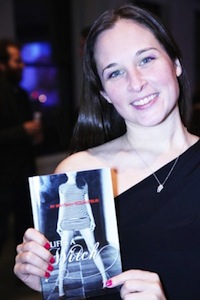Here is a list of different literary criticism strategies. I came across this in my son's text book "The Bedford Introduction to Literature" Michael Meyer. I found it helpful and interesting. I like the deconstructionism because I think that a good writing has multiple meaning and that is what makes a person want to read it again and again.
Historical:
Literary History Criticism: This shifts the emphasis from the period to the work. It examines the attitudes of people during that time, not just the war. For example, Stowe's novel is representative of the racism at the time. If it is right on or to the left or right could reflect twentieth-century attitudes. Don't fail to mention the bloodiest wars, even if it is not part of your story. It will reflect the characters attitude.
Marxist Criticism: this focuses on assumptions and values about culture, race, class and power. This tries to correct social injustices. It pays more attention to content and themes than to its form.
New Historicist Criticism: focuses on the interaction between the historic context of a work and a modern reader's understanding and interpretation of the work. Historical perceptions are governed by our own concerns and preoccupations. New historicists prepare us to the fact that the history on which we choose to focus is colored by being reconstructed from out own present moment.
Cultural Critiscism: Like new Historicist, focus on the historical but pay attention to popular beginnings of social, political, and economic contexts. This includes a postcolonial criticism. This refers to the analysis of works of Native Americans during or after British colonial rule. It points out that writers from colonial powers somtetimes misrepresent colonized cultures by reflecting more their own values.
Gender Strategies:
Gender Critics: explore how ideas about men and women- what is masculine and feminine- can be regarded as socially constructed by particular cultures. This includes heterosexuals and homosexuals with biological differences, like feminist criticism, can be usefully regarded as a subset of gender criticism.
Feminist Criticism: they seek to correct what they regard as a predominantly male dominated critical perspective with a feminist consciousness. Concerned about hos gender affects the way men and women write about each other. Do women use language differently than men?
Gay and Lesbian Criticism: focus on a variety of issues, including how homosexuals are represented in literature, how they read literature and whether sexuality and gender are culturally constructed or innate.
Mythological Strategies: this attempts to identify what in a work creates deep universal responses in readers. These critics interpret the hopes, fears and expectations of entire cultures. This strategy is not just about ancient gods, it is for understanding how human beings try to account for their lives symbolically. Myths can be a window into a culture's deepest perceptions about itself because myths attempt to explain what otherwise seems unexplainable: a people's origin, purpose, and destiny. Critics lool for underlying, recurrent patterns in literature that reveal universal meanings and basic human experiences for readers regardless of when or where they live. Archetypes, for example, symbolically embody these experiences. ei. quests, initiations, scapegoats, meditative withdrawals, descents to the underworld, and heavenly ascents. For example, a body of water could represent unconscious or eternity or unsetting suns, pointing toward death. Color symbolism is green, growth, fertility or black, evil, and wise old men. Mythological critics explain the larger connections and explain the works lasting appeal. For example, Oedipus the King, Sophocles, focus on the relationship between Oedipus;s role as a scapegoat and the plague and drought that threaten to destroy Thebes. The well-being of a king was directly linked to the welfare of his people. IF a leader was sick or corrupt, he had to be replaced in order to guarantee the health of the community. These archetypal patterns exist potentially in any literary period.
Reader-response Strategies: the focus of the work is on the reader rather than the work itself. It aims to describe the reader's experience of a work. The reader has expectations and assumptions and we either meet or not meet those expectations.The text remain the same, but the reader does not, therefore, social and cultural values influence reading. What does your work do to a reader?
Deconstructionist strategies: These critics insist that literary works do not yield fixed, single meanings. Language is not a precise instrument but a power whose meanings are caught in an endless web of possibilities that cannot be untangled. It seeks to destabilize meaning instead of establishing them. It focus on the gaps and ambiguities that reveal a text's instability and indeterminacy, whereas New Critics look for patterns that explain how the text's fixed meaning is structured.







